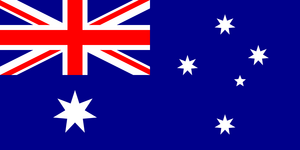77 years of fusion research in Australia
The first fusion reaction to be realized in the laboratory was performed by Australian Mark Oliphant and German Paul Hartek working in the Clarendon Laboratory (Cambridge, UK) under the guidance of Lord Rutherford (New Zealand) in 1932. This landmark work involved the bombardment of deuterium (D) by energetic deuterons and hypothesized the previously unknown isotopes hydrogen-3 (tritium) and helium-3 arising from the D-D fusion reaction.
In 1946, the Australian Peter Thonemann and Sir George Thomson (UK), pioneered studies of plasma magnetic confinement in a toroidal configuration at Oxford University. Peter Thonemann was closely identified with the landmark toroidal pinch experiment ZETA.
In 1958, Oliphant, who had returned to Australia, established plasma physics research at the Australian National University (ANU). In 1961, the New Zealander, Charles Watson-Munro established a large plasma physics research program at the University of Sydney. Subsequently other plasma physics research programs commenced at the Universities of Melbourne, New England, New South Wales and Canberra, and at the Flinders, Murdoch and Curtin Universities. Australia was represented during these early years in the International Fusion Research Council (IFRC) of the International Atomic Energy Agency (IAEA).
From 1964 to 1969, the ANU built and operated the only tokamaks outside the Soviet Union (LT-1, 2 and 3). ANU researcher Bruce Liley (New Zealand) had seen the promise of this type of device and followed them with the larger LT-4 experiment (1978-1984). The international tokamak "boom" had begun (a tokamak was also constructed at the University of Sydney) so ANU decided to pioneer advanced stellarators. This has led to the present ANU device, H-1, a stellarator of heliac type, being established as the National Plasma Fusion Research Facility (1997).
The Australian plasma physics research program has a history of innovation. Apart from its early involvement with tokamaks, it carried out seminal work on Alfvén wave physics, it invented the Rotamak (a near-spherical plasma established by rotating magnetic fields) the research on which has applications to plasma current drive, it demonstrated the first heliac, SHEILA, (1985) and made the first experimental demonstration of a spherical torus configuration (1988). In addition, Australians have made significant plasma diagnostic innovations, contributions to laser fusion theory, as well as contributions relating to fusion reactor-relevant materials.
Overall, these research programs have produced a significant number of researchers, many of whom have held, or are at present holding, key positions in the international fusion program. Australia has always had (and continues to have) good international collaborations in the fusion field.


